Occupational environment monitoring at the factory mining thorium ore
99,000 ₫
Note: The above price is calculated for one sample, the price may fluctuate depending on the area of the environment to be monitored and the movement of the market. For more accurate price support, please refer to the quotation table or contact directly with our consulting staff.
Environmental monitoring of thorium ore mining factories is a session of collecting, analyzing, and evaluating factors in the workplace that may be harmful to the health of workers.
Table of Contents
Toggle1. Overview of thorium ore mining factory
a. What is a thorium ore mining factory?
Factory for thorium ore mining is a production facility designed to mine and process thorium ore. Thorium is a chemical element in the periodic table with atomic number 90. It is a rare metal and is used in certain technological applications such as the nuclear energy industry, alloy production, and electronic devices.

b. Production stages in a thorium ore mining factory
The thorium ore mining process generally includes the following stages:
- Mining: Thorium ore is extracted from deposits containing thorium minerals. Mining methods may include open-pit mining, underground mining, or other methods depending on geological characteristics and mining scale.
- Pre-processing: Ore is transported to the factory and goes through pre-processing stages. This includes crushing, grinding, and classifying the ore to separate thorium from other components of the ore.
- Extraction process: Pre-processed thorium ore is treated using extraction methods to separate thorium from associated substances and produce purified thorium. Extraction methods may involve chemical solvents or other processes depending on the specific technology and production process.
- Processing and refining: The thorium product after extraction is further processed and refined to achieve a higher purity form. This process may include filtration, precipitation, metallurgy, and other refining steps to reach the desired product quality.
- Packing and transportation: Purified thorium after processing and refining is packed and transported to customers or factories that use thorium in other technological applications.

c. Types of machinery used in a thorium ore mining factory
Common types of machinery used in a thorium ore mining factory include:
- Crusher: Used to crush ore into smaller sizes to facilitate separation of thorium and other minerals.
- Screener: Used to classify and separate thorium from crushed ore particles.
- Separator: Used to separate thorium from associated substances in the ore. Separators may use methods such as gravity separation, polarization separation, or chemical separation to isolate thorium.
- Filter: Used to remove impurities and residues from purified thorium after extraction.
- Metallurgical equipment: Used to clean and refine purified thorium, removing residual substances and improving the purity of the final product.
- Packing machine: Used to pack thorium that has undergone processing and refining into suitable units or packaging for transport and storage.

d. What occupational diseases can occur to workers in thorium ore mining factories?
Workers in thorium ore mining factories may develop certain occupational diseases related to exposure to thorium and associated substances during mining. Below are some possible occupational diseases:
- Lung diseases related to dust: Exposure to thorium ore dust can cause respiratory issues, including pneumonia, bronchitis, and respiratory failure.
- Skin diseases: Contact with thorium and its compounds may cause dermatitis, skin irritation, and skin allergies.
- Cancer: Thorium and some of its radioactive isotopes may cause cancer when inhaled or ingested by workers.
- Digestive diseases: Exposure to thorium can lead to digestive issues such as enteritis, stomach ulcers, and liver problems.
To prevent these occupational diseases, occupational safety measures must be applied, including the use of personal protective equipment (such as masks, gloves, chemical-resistant clothing), minimizing direct exposure to hazardous substances, adhering to safe working procedures, and conducting regular health checks.

e. Common types of thorium ores worldwide
Worldwide, common types of thorium ores include:
- Monazite: Monazite is a common thorium ore containing about 2-12% thorium oxide (ThO2). It often contains other elements such as lanthanum and cerium and is mainly mined in countries such as India, Brazil, Australia, and China.
- Thorite: Thorite is an ore containing thorium, uranium, and other rare elements. It contains about 20-80% thorium oxide (ThO2) and is found in many countries worldwide, including Norway, Sweden, Canada, Australia, and the United States.
- Uranothorite: Uranothorite is an ore containing both thorium and uranium. It has a structure similar to thorite and is found in many countries, including the United States, Canada, Norway, and South Africa.
- Thorianite: Thorianite is an ore containing a large amount of thorium oxide (ThO2) and uranium. It is found in rare ore deposits worldwide, including Madagascar, Sri Lanka, and islands in Oceania.
2. Overview of occupational environmental monitoring service
a. What is occupational environmental monitoring in a thorium ore mining factory?
Occupational environmental monitoring (or workplace environmental measurement) in thorium ore mining factories is the activity of collecting, assessing, and analyzing measurement indicators of workplace environmental factors at thorium ore mining factories, aiming to take timely measures to minimize environmental harm to workers’ health and prevent occupational diseases. Occupational environmental monitoring is a mandatory regulation for thorium ore mining factories.
Occupational environmental monitoring plays the most important role in the care, protection, and enhancement of workers’ health because the main resource of enterprises and the direct creator of profit for enterprises is the worker. Workers who are frequently exposed to risk factors and occupational hazards beyond permissible standards will be affected in terms of health and may develop occupational diseases.
REGISTER FOR OCCUPATIONAL ENVIRONMENTAL MONITORING SERVICE
b. Occupational environmental monitoring program of Nam Viet
The occupational environmental monitoring program of Nam Viet is a program researched by monitoring engineers in the field of occupational safety and environmental protection. With the goal of ensuring health and safety for workers, this program uses modern measurement methods to monitor air quality, water, and microclimate, physical, dust… factors in the workplace environment. This is a very important program to ensure a safe working environment and protect workers’ health.
In addition, the occupational environmental monitoring program of Nam Viet also plays an important role in researching and developing new solutions to improve workplace environmental quality. With the dedication and professionalism of the monitoring expert team, Nam Viet’s exclusive monitoring program is becoming a breakthrough in the field of occupational safety management and environmental protection in Vietnam.

c. Standardization in workplace environmental measurement procedures
Standardization in workplace environmental measurement procedures of Nam Viet is a very important aspect in ensuring the quality of measurement results. To ensure the accuracy and reliability of measurement results, this program applies recognized standards and standardized procedures of Ho Chi Minh City Department of Health. This ensures that collected data will be used with high reliability in workplace environmental assessment and in making decisions to improve the workplace environment and protect workers’ health.
These standardized procedures also ensure that measurement results are carried out by a team of monitoring specialists with high qualifications and many years of experience, helping managers and experts trust the results from An Toan Nam Viet and make accurate, valuable decisions in protecting workers’ health and the environment.
By applying standardization in workplace environmental measurement procedures, Nam Viet demonstrates its commitment to ensuring a safe working environment and protecting workers’ health, while also actively contributing to the development and improvement of occupational safety management and environmental protection quality in Vietnam.
d. Report on occupational environmental monitoring results in thorium ore mining factory
Occupational environmental monitoring results are prepared according to Form No. 04 Appendix III issued with Decree 44/2016/ND-CP and are made in 02 copies: 01 copy sent to the labor establishment that signed the contract to perform occupational environmental monitoring and 01 copy kept at the organization performing occupational environmental monitoring.
The retention period of occupational environmental monitoring results is regulated by law as indefinite record storage.

e. Frequency of conducting occupational environmental monitoring according to the law
According to Clause 2 of Article 18 of the Occupational Safety and Hygiene Law 84/2015/QH13, employers must organize occupational environmental monitoring to assess harmful factors at least once a year.
f. Deadline for submitting occupational environmental monitoring results reports according to the law
The deadline for submitting reports is before December 31 every year, businesses belonging to production facilities are required to submit occupational environmental monitoring results reports to the Department of Health at the locality where the production, business facility has its headquarters and where workers are working.
When there are changes in technological processes, production processes, or when renovating, upgrading labor facilities that may generate new harmful factors to workers’ health, businesses belonging to production facilities must update occupational hygiene records regarding harmful factors requiring occupational environmental monitoring.
g. Regulations on penalties for violations of occupational environmental monitoring by employers
According to Article 27 of Decree No. 12/2022/ND-CP dated January 17, 2022, on administrative penalties in the field of labor, social insurance, and Vietnamese workers working abroad under contracts.
- Clause 2: A fine from 2,000,000 – 5,000,000 VND for employers who do not publicly announce to workers at the occupational environmental monitoring site and at the place inspected, evaluated, and managed for hazardous factors immediately after obtaining occupational environmental monitoring results and inspection, evaluation, management results of hazardous factors at the workplace.
- Clause 3: A fine from 20,000,000 – 40,000,000 VND for employers who fail to conduct occupational environmental monitoring to control harm to workers’ health according to the law.
- Clause 4: A fine from 40,000,000 – 60,000,000 VND for employers who collaborate with occupational environmental monitoring organizations to commit fraud in occupational environmental monitoring activities but not to the extent of criminal liability.
3. Harmful environmental factors for workers in thorium ore mining factories
Workers in thorium ore mining factories may be exposed to harmful environmental factors such as:
- Radiation: Thorium ore contains radioactive substances and natural radiation, including thorium-232 and its decay products. Exposure to radiation may harm human health, negatively affect the cellular system, and increase the risk of cancer.
- Dust and fine particles: During the mining and processing of thorium ore, fine particles and dust may be generated and remain in the working environment. Inhalation of these fine particles and dust may cause respiratory irritation, pneumonia, and other respiratory problems.
- Chemicals and pollutants: The mining and processing of thorium ore may involve the use of various chemicals and pollutants. Exposure to these substances may harm the skin, eyes, and other internal organs.
- Noise and vibration: Machinery and equipment in thorium ore mining factories may generate loud noise and strong vibrations. Continuous exposure to noise and vibration may cause stress, hearing loss, and affect overall health.
REGISTER FOR OCCUPATIONAL ENVIRONMENT MONITORING SERVICE
4. Measures to improve the working environment in thorium ore mining factories
Improving the working environment in thorium ore mining factories is an important task to protect workers’ health and safety. Below are some measures that may be applied:
- Radiation management: Establish a radiation monitoring system and comply with radiation safety regulations. Ensure measurement and monitoring of radiation levels in the working environment while providing radiation protection for workers.
- Ventilation system: Ensure effective ventilation in factories to remove dust, fumes, and pollutants from the working air. This may include the use of fans, vacuum systems, and air filtration systems.
- Use of personal protective equipment: Ensure that workers are fully equipped with and correctly use personal protective equipment such as masks, goggles, gloves, protective clothing, and safety shoes to protect against direct exposure to hazardous substances and to safeguard skin, eyes, and respiratory health.
- Training and education: Train employees on occupational safety, safe working procedures, and awareness of the health impacts of thorium ore mining. Provide information and guidance on the use of personal protective equipment, waste handling procedures, and other safety measures.
- Waste management: Implement proper waste management procedures to minimize the impact of waste from thorium ore mining. Ensure waste treatment, storage, and transportation comply with environmental standards and regulations.
- Periodic inspection and pollution control: Conduct regular inspections to assess the quality of air, water, and soil in the working area. Apply pollution control measures such as installing wastewater treatment systems and performing regular machinery maintenance to minimize pollutant emissions.
- Regularly organize occupational environment monitoring in factories, collect and analyze harmful factors affecting workers, and make adjustments to reduce risks, thereby preventing occupational diseases for them.
5. Benefits of periodic monitoring in thorium ore mining factories
An Toan Nam Viet provides enterprises with excellent benefits when using occupational environment monitoring services in accordance with Decree 44/2016/NĐ – CP on the management and control of harmful workplace factors affecting workers.
- Enterprises can proactively control harmful factors in workshops or factories.
- Receive consulting and recommendations on measures to minimize harmful factors and improve workplace quality.
- Indirectly protect human resources, the key factor in business development.
- Reduce the impact of occupational diseases on workers’ health, thereby lowering treatment costs in the future.
- Improve workers’ health, leading to better product quality and stable productivity.
- Comply with occupational safety laws, avoiding legal risks.
- Build credibility and professionalism in all aspects, thereby enhancing the company’s brand reputation.
The occupational environment monitoring service of Nam Viet is the solution to minimize the impact of occupational diseases, contributing to a healthy and high-quality working environment.

6. National Occupational Environment Monitoring Center
Occupational environment monitoring center of Nam Viet is a professional unit specializing in monitoring and measuring occupational environment quality nationwide across all provinces in Vietnam. With a team of experienced monitoring specialists, the center uses modern measuring equipment to ensure accuracy and reliability.
In addition to providing monitoring services, the center also supports clients in planning, handling, and tracking occupational environment issues. With the motto “customers at the center,” the center focuses on customer satisfaction, meeting all client needs, and committing to the best solutions for businesses.
REGISTER FOR OCCUPATIONAL ENVIRONMENT MONITORING SERVICE
With investments in technology, equipment, and human resources, the monitoring center of Nam Viet has become one of the reputable units in occupational environment monitoring in Ho Chi Minh City with the following goals:
- We always value brand reputation and the quality of our services.
- We provide clients with the best and most suitable solutions possible.
- With a team of experienced Masters and Engineers, we aim to protect the environment and bring value to businesses.
- With An Toan Nam Viet Monitoring team, your company will receive professional services from experts in the monitoring field, along with the best cost advantages.
The occupational environment monitoring process at Nam Viet includes the following basic steps:
- Before performing occupational environment monitoring, our company always ensures that monitoring machinery and equipment are calibrated and standardized in accordance with legal requirements.
- Strictly follow the occupational environment monitoring procedures committed to the Department of Health.
- Accurately report monitoring results to employers.
- If monitoring results show unsafe conditions for workers, Nam Viet will support by providing corrective solutions, and the factory will implement the following:
- Implement measures to improve working conditions, minimizing harmful factors and preventing occupational diseases.
- Organize medical check-ups to detect occupational diseases and work-related illnesses early for workers in unsafe environments.
- Provide physical allowances to workers as required by labor laws.

7. Occupational Environment Monitoring Price Quotation
To help businesses carry out occupational environment monitoring professionally and effectively, Nam Viet provides clients with a high-quality, reasonably priced occupational environment monitoring service price list.
- Our monitoring quotation provides detailed information about the costs of the monitoring services we offer, including transportation, measurement, analysis, and reporting fees. Clients can be assured of the accuracy and reliability of the monitoring reports we provide.
- We are committed to offering the most competitive and reasonable prices on the market, and we are always ready to provide quick and professional consulting to address all inquiries regarding monitoring services.
- With Nam Viet’s monitoring quotation, clients can easily choose service packages that suit their needs. We are committed to delivering the highest satisfaction with professional service quality.
1 review for Occupational environment monitoring at the factory mining thorium ore
No comments yet

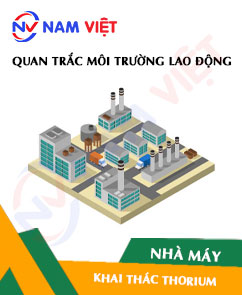
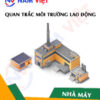
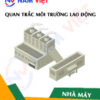
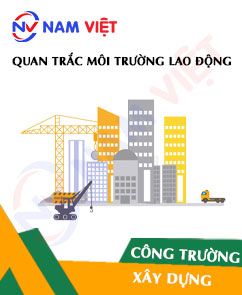






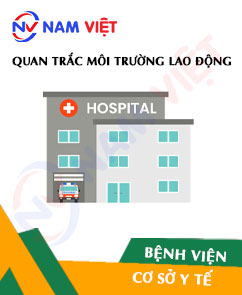
maituyet.cuong12
Professional labor environment monitoring unit